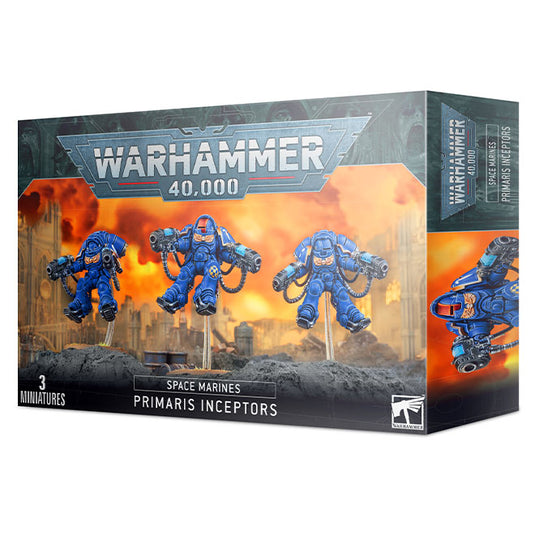


We will send you a notification as soon as this product is available again.
This multi-part plastic kit contains the components necessary to assemble a set of 3 Primaris Inceptors. Clad in Mk X power armour featuring a bulky jump pack – thrust-vectoring rocket engines mounted on the Space Marine’s back, enabling fast, bounding leaps to close on the foe at dizzying speed – they present a unique, easily recognisable silhouette. The jump pack itself and the blast shield cowl that protects the Inceptors’ heads from the immense heat of the pack’s rockets dominate the miniature, with posable fins, shock-absorbing devices attached to the boots and extra cabling and vents unique to this kit. The Inceptors can be armed with either 2 plasma exterminators each or 2 assault bolters each – the plasma exterminators are heavily shielded to provide protection against heat discharge and the assault bolters feature distinctive box magazines.
5 helmets are included, designed to be used with the blast shield cowl – no bare heads here, obviously! 3 blast shield helms are included and 4 purity seals – this includes 1 double seal used to distinguish the Sergeant.
The Primaris Inceptors come as 117 components, and are supplied with 3 Citadel 40mm Round bases, 3 45mm flying stems and an Ultramarines Infantry Transfer Sheet.
What are miniatures used for in tabletop games?
How do I paint my miniatures?
What materials are miniatures typically made from?
How can I start collecting miniatures?
Where can I buy miniatures?
What are some tips for assembling miniatures?
Can miniatures be used in different games?
How should I store and transport my miniatures?
Are there any beginner-friendly miniature painting tutorials?
